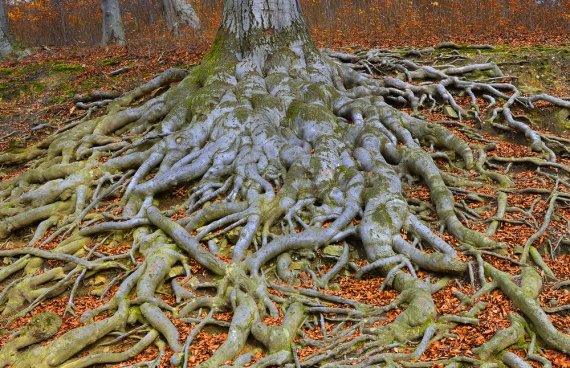(Photo: Shutterstock)Weemstra used studies of tree rings to relate tree growth to the climate and water supply. The conclusion was as expected: ‘All species grow less if there is less rain. A much more interesting finding is that some species respond strongly to groundwater levels while others do not. They grow less if the groundwater level is low.’
Weemstra concluded that this must have something to do with the roots. Next, she compared the root growth of two species — Norway spruce and beech — in two completely different soils: thick clay soil in the Flevopolder and poor sandy soil in the Veluwe.
As expected, Weemstra found that both species put down more roots in the poor soil of the Veluwe than in the polder. The poorer the soil, the greater the root surface area that the tree creates to obtain its nutrients. Weemstra also expected to see thinner roots in the Veluwe for the same reason — a greater surface area. But that turned out not to be the case. ‘What I did find is that the Norway spruce invests more in the symbiosis with mycorrhiza fungi in poor soil. Beech trees don’t do that.’
All in all, it is difficult to figure out the relationship between roots and growth. The relationship above ground between leaves and growth is simpler. You have short-lived trees that grow fast with thin leaves that fix a lot of carbon and trees that take things at a more relaxed pace, live longer and have thicker leaves. These are the two extremes on the spectrum. Such a straightforward spectrum does not exist for roots, concludes Weemstra. She thinks that is because the underground world is more complex than the one above ground. ‘Leaves absorb carbon dioxide and light. There are far more nutrients underground, and they are also found in different forms. A completely different kind of root is needed for a mobile element like nitrogen compared with an immobile one like phosphate.’
‘What is more, mycorrhiza fungi have a big influence on the root system,’ she continues. ‘We also don’t know nearly enough to work out the link between the properties of roots and their function. That has hardly been tested at all.’


